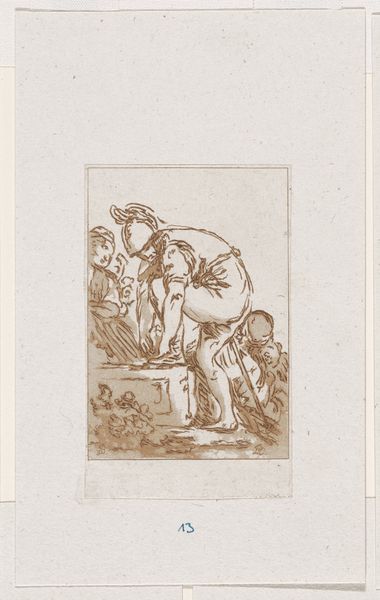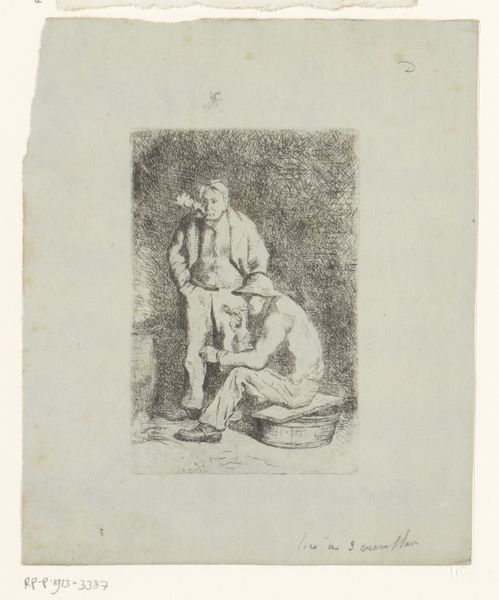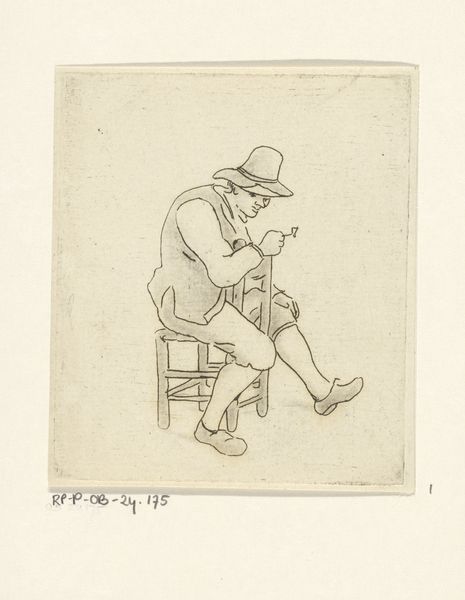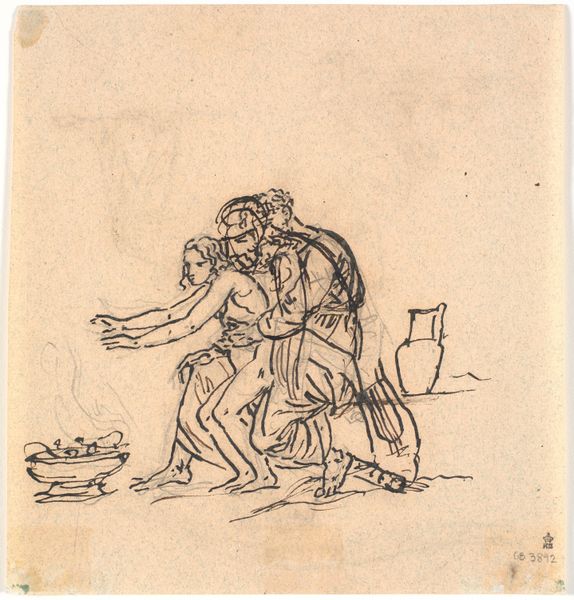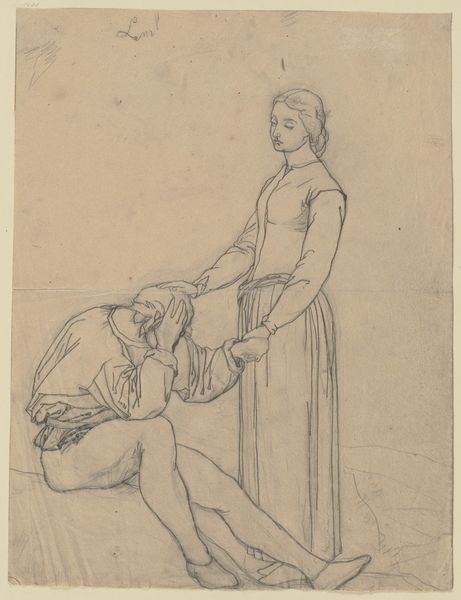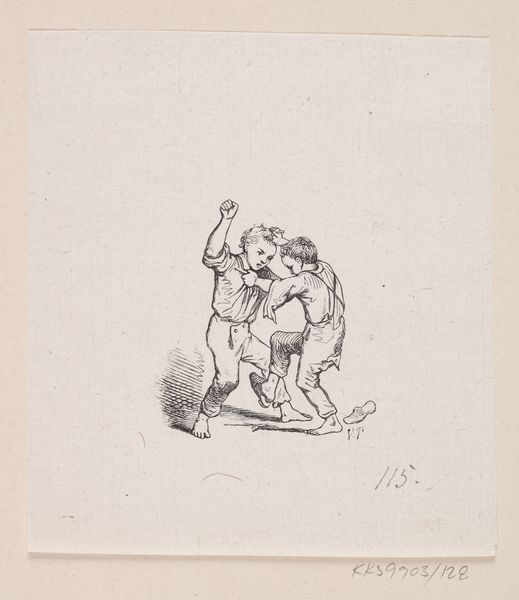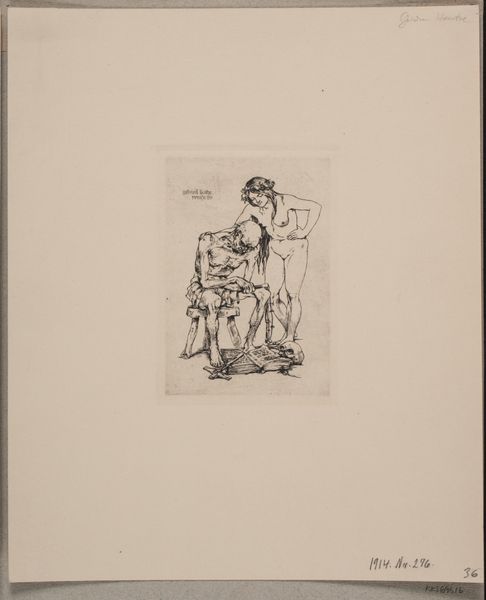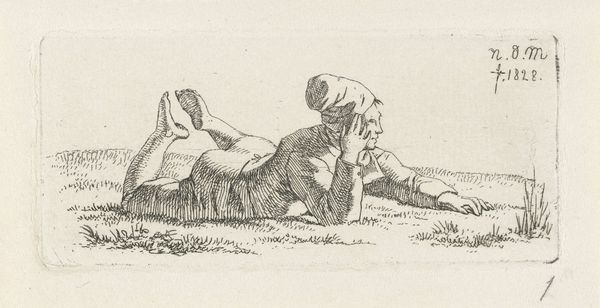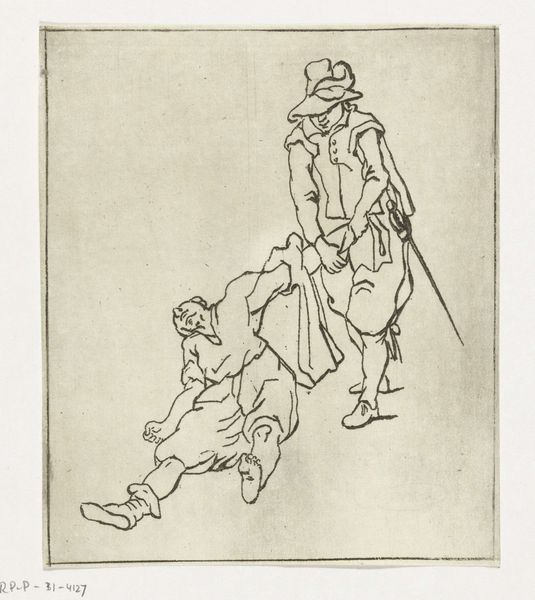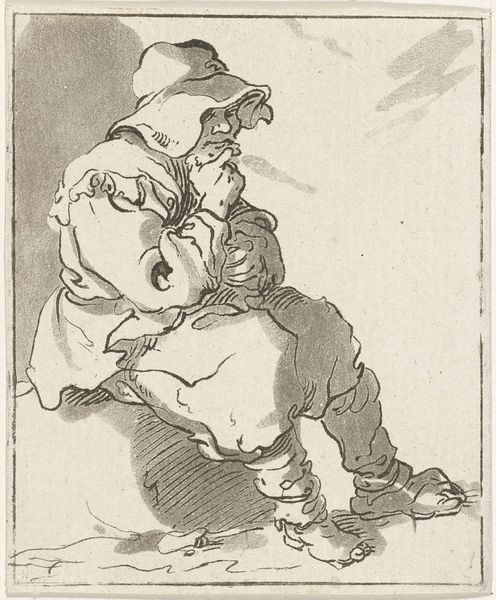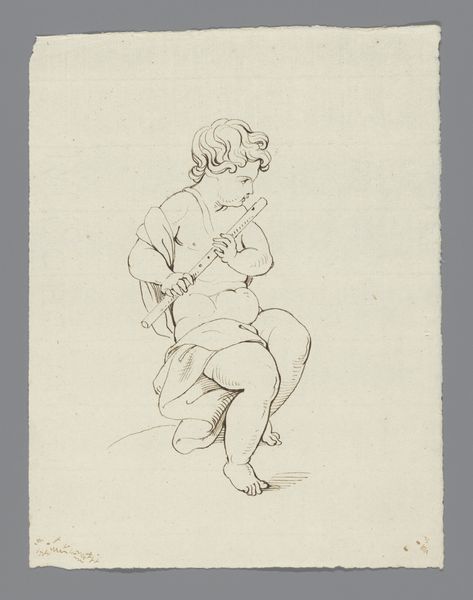
drawing, ink, pencil
#
portrait
#
drawing
#
16_19th-century
#
pencil sketch
#
ink
#
romanticism
#
pencil
#
genre-painting
Copyright: Public Domain
Editor: We are looking at "Sitting wire-maker," a drawing by Franz Pforr currently residing in the Städel Museum. It looks like it was done with pencil and ink. The composition has a very casual, everyday feel. I'm curious, what’s your interpretation of this scene, especially considering Pforr’s artistic milieu? Curator: This drawing offers a fascinating glimpse into early 19th-century social realities. Pforr was associated with the Nazarenes, a group of artists who reacted against academic art, and sought inspiration in earlier, more "authentic" styles, and religious and genre paintings. Notice how the depiction of the wire-maker isn't romanticized, and there's almost an anthropological quality in recording everyday work life, so, where do you think such interest comes from at this time? Editor: Maybe a turn away from idealized historical or mythological themes towards something more relatable? The rise of Romanticism, perhaps? Curator: Precisely! Romanticism did fuel the attention toward local cultures. The rising interest in folk life as "genuine" expressions can be seen here, giving us insight into a growing cultural nationalism but also how art became a site of examining laboring class in modernising societies. This "realism" gains momentum, so how do we perceive similar observations today? Editor: I suppose we're now used to photography doing that work of documenting ordinary people, but here, it seems Pforr elevates the ordinary, the working class. It really makes me think about who and what we choose to depict. Curator: Exactly. The piece is less about this specific "wire-maker", and more a statement about society's relationship to its working class. We also have to consider the patron’s point of view here too. Did it satisfy a specific market? Did it promote sympathy for workers? All that plays into what this drawing communicated. Editor: It’s incredible how much socio-historical context can be unlocked from such a simple sketch. It gives me a lot to consider regarding artistic choices and the forces that shape them. Curator: Absolutely. Remembering the layers of cultural and historical framing makes a museum visit that much more insightful.
Comments
No comments
Be the first to comment and join the conversation on the ultimate creative platform.
